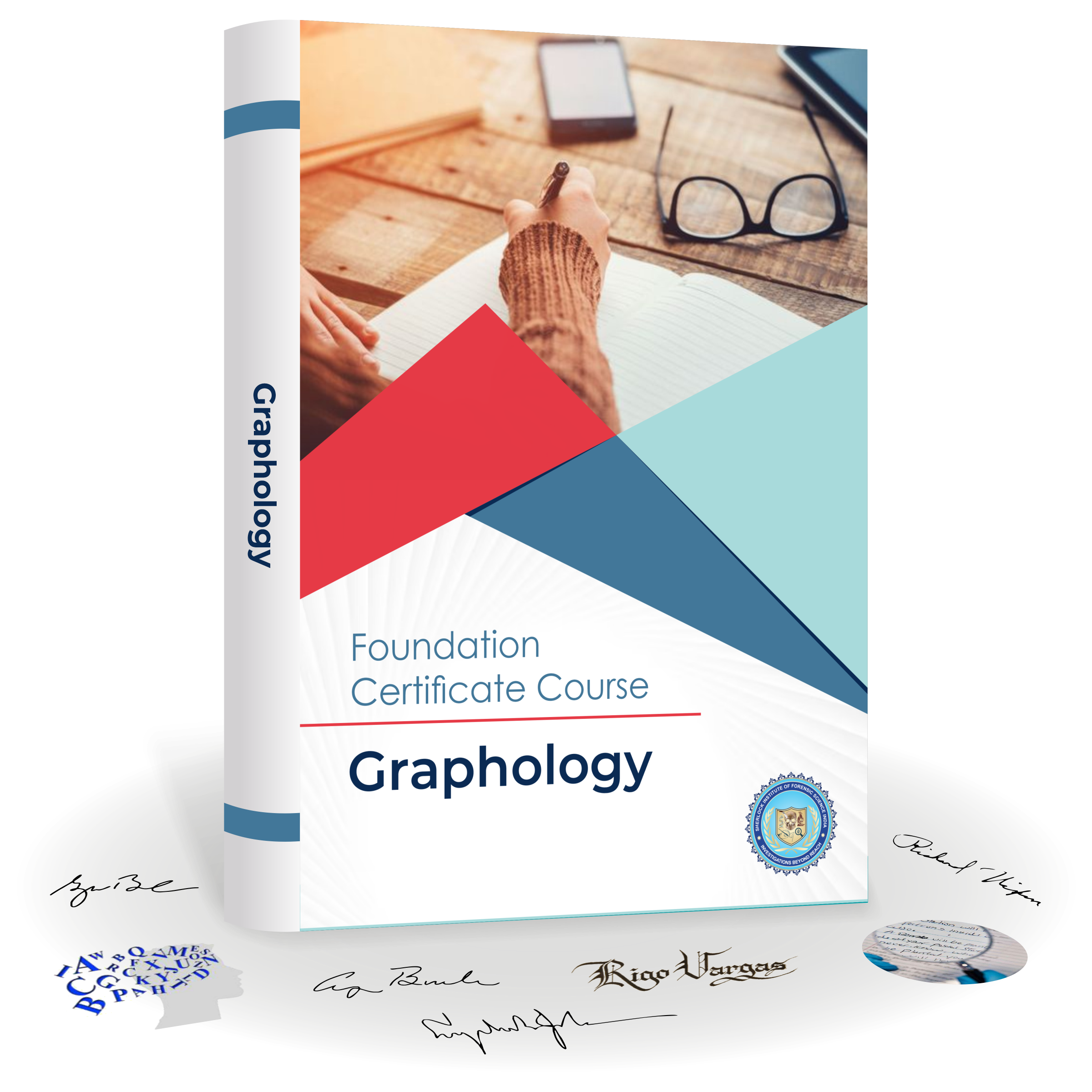It was a great experience to learn how to decipher personalities through handwriting. Superb content and skilled instructors. A unique learning journey!

Certification
Foundation Course Certificate
Mode of Study
100% Online Start now and learn from anywhere
Learning Hours
15 hours of Video Sessions
Learning Medium
English
Learn Forensic at Your Own Pace, Master at Your Own Time!
Unlock Your Potential with Self-Paced Learning!
Learn Anytime, Anywhere
No schedules, no pressure! Study at your convenience
Go at Your Own Speed
Master concepts without rushing or slowing down
Full Access to Course Materials
Revisit lessons whenever you need
Expert-Led Content
Gain industry-relevant skills from top instructors
Perfect for Professionals & Students
Balance learning with your lifestyle
Affordable & Cost-Effective
No travel, no extra expenses, just pure learning!
Earn a Recognized Certification
Boost your resume and career prospects
Join Thousands of Successful Learners Today!
Enroll Now & Take Control of Your Learning Journey!
Graphology includes analyzing yours or anyone’s handwriting and signature to understand their real and public image. The online Graphology Foundation Certificate Course by Sherlock Institute of Forensic Science (SIFS India) will equip you with all the required skills to become a skilled graphologist. Learn to decode the human subconscious mind and help yourself and others overcome weaknesses to achieve a dream personality.
All the pre-recorded sessions are taught by expert graphologists of national and international fame. They have several years of experience and have worked with schools, colleges, and universities across the country. You will acquire a good understanding of what graphology is, how to spot positive and negative traits in your handwriting, how to reprogram your brain to achieve goals, and applications of handwriting and signature analysis to everyday life. The curriculum includes a few case studies of famous people to help you understand how to analyze handwriting effectively.
This study dates back several centuries, yet it is still evolving. People worldwide are slowly realizing its significance in comparison to other personality assessment tests. These tests’ results can be manipulated by the doer, but no one can manipulate their handwriting. And hence, it gives the best clues about the true character of the person. You can opt for this course to learn to analyze only your own personality or continue further to gain mastery over the subject and become a professional graphologist.
Become Proficient to Answer:
- What is the primary purpose and scope of graphology, and what aspects of personality can it reveal or not?
- Why is graphology called brain writing, and how does an understanding of the conscious and subconscious mind relate to it?
- What personality traits can be inferred from the analysis of the letter "T" in handwriting?
- How does the analysis of the letter "I" (both small and capital) in handwriting provide insights into an individual's personality characteristics?
- What are the different forms of connections in handwriting, and what significance does each connection represent?
- How do the alignment and margin settings in the handwriting sample reveal information about the writer's personality?
- What do slants and pressure in handwriting analysis signify, and what are the personality outcomes?
- How are different zones of handwriting analyzed and what importance do they hold for personality formation and day-to-day activities?
- How do you collect handwriting and signature samples, and what steps are to be followed for analyzing them?
- What are the fundamental elements of signature analysis, and what insights does it provide into a person’s personality?
- What are some common danger signs in handwriting and signature analysis, and how do you interpret them?
- What finer details in handwriting, such as letter connectivity and choice of writing instrument, contribute to a deeper understanding of personality traits?
- What is doodle analysis, how is it performed, and how does it relate to employment aptitude analysis through graphology?
Learning Outcomes:
Basic Understanding of Graphology: You will acquire a fundamental understanding of the principles and approaches of graphology and how your handwriting is an outcome of thought processes in your brain.
Graphological Analysis Skills: You will be able to interpret various handwriting traits, like letter forms, spacing, slant, pressure, zones, and other features.
Personality Assessment: You will be able to analyze a handwritten sample to describe personality traits, emotional characteristics, and behavioral tendencies.
Ethical Considerations: You will gain an understanding of the responsibilities of working as a graphologist, i.e., the dos and don’ts of this practice.
Practical Applications: You will become proficient in the basic analysis of handwriting samples and apply your knowledge in various personal and professional contexts.
Course Details:
Fee | National: 1770 INR (1500 INR + 18% GST) International: 50 USD |
Duration | 1 Month |
Eligibility | 12th Passed |
Session Timing | Learn at your own Pace |
Payment Details:
International Student : PayPal: forensicdocument@gmail.com
Account Details for National Student
Bank Name - ICICI BANK
Acc. Name - SIFS INDIA PVT. LTD.
Account No. - 663505500086
Type - Current
IFSC Code - ICIC0000160
Address - ICICI Bank, H-4, Model Town -III, New Delhi - 110009









